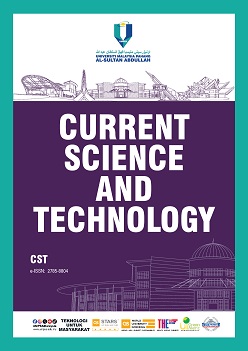Fire Loads Calculation in The School Library: A Case Study
DOI:
https://doi.org/10.15282/cst.v4i2.10849Keywords:
Fire load, Library, Combustible material, Fire safety, Case studyAbstract
A combustible material is one of fire hazard where the number of combustible materials or fire load could affect the heat release and fire severity in enclosure. A library is a facility where books and information sources are kept. People can reach them more easily for a variety of reasons such as knowledge. As the library is full of combustible materials such as books, the probability of fires happening there is high. The awareness of the danger of fire caused by fire load is low because most people think that the occurrence of fire in the school library is low. Therefore, this research objectives aim to identify the types of fire loads that are present in the library and to determine what type of fire load has the highest contribution to fire hazard. The determinations of fire load were conducted by using combination of fire load survey method, weighing and inventory method. In this study, the paper is higher than other combustible material that is 27705.6 MJ and the total of fire load density of the library is 234211.9 MJ/m2 that is fall under high class of fire. Result from fire load survey can help to determine the sufficient requirements of fire suppression in school library as well as fire fighters’ intervention strategy. Furthermore, this study contributes to fire risk assessment towards life safety, property, and environmental damage thus improving the fire safety measures and preparedness in educational settings.
References
[1] M. A. Hassanain, M. Aljuhani, M. B. Hamida, and M. H. Salaheldin, “A framework for fire safety management in school facilities,” International Journal of Built Environment and Sustainability, vol. 9, no. 2, pp. 1–9, 2022.
[2] V. López-Chao, J. M. Muñoz-Cantero, and V. López-Pena, “Analysis of the relation between it school design and the lack of teaching method based on digital competence,” in ACM International Conference Proceeding Series, Association for Computing Machinery, pp. 1-5, 2017.
[3] M. A. Hassanain, “Towards the design and operation of fire safe school facilities,” Disaster Prevention and Management: An International Journal, vol. 15, no. 5, pp. 838–846, 2006.
[4] S. Nurud Suria and M. Sa’ari, “A review of fire risk assessment tools in compartment,” ARPN Journal of Engineering and Applied Sciences, vol. 11, no. 11, pp. 7284–7287, 2016.
[5] T. Gernay, “Performance-based design for structures in fire: Advances, challenges, and perspectives,” Fire Safety Journal, vol. 142, p. 104036, 2024.
[6] N. Saravanan, A. M. Venkatachalam, M. Baskaran, and G. Kamesh, “Estimation of Fire Load Calculation in College Library,” Journal of Information and Computational Science, vol. 10, no. 1, pp. 1388–1395, 2020.
[7] N. Arunraj, C. Senthil Kumar, and K. Vijaya MAruthi, “Estimation of fire load and its risk assessment in warehouse,” SSRG International Journal of Industrial Engineering, vol. 2, no. 2, pp. 5–9, 2015.
[8] E. Zalok, “Validation of Methodologies to Determine Fire Load for Use in Structural Fire Protection,” USA, 2011.
[9] H. W. Yii, Effect of Surface Area and Thickness on Fire Loads, University of Canterbury. Civil Engineering, New Zealand, 2000.
[10] W. K. Chow, S. S. Han, and H. Kong, “Report on a recent fire in a new curtain-walled building,” International Journal on Engineering Performance-Based Fire Codes, vol. 8, no. 3, pp. 84–87, 2006.
[11] T. Lennon and D. Moore, “The natural fire safety concept—full-scale tests at Cardington,” Fire Safety Journal, vol. 38, no. 7, pp. 623–643, 2003.
[12] J. Liu and W. K. Chow, “Determination of fire load and heat release rate for high-rise residential buildings,” Procedia Engineering, vol. 84, pp. 491–497, 2014.
[13] K. M. G. Chen, “Analysis of Semi-Rigid Connections Subject to Fire Loads in a Steel Framework,” Master Thesis, University of Waterloo, 2010.
[14] C. C. S. Fong and W. K. Chow, “Fire load density survey in four shopping malls in Hong Kong,” International Journal on Engineering Performance Based Fire Codes, vol. 10, no. 1, pp. 12–16, 2011.
[15] N. Ocran, “Fire loads and design fires for mid-rise buildings,” Master of Applied Science in Civil Engineering, Carleton University, 2012.
[16] N. Ocran, Technical Note 4, 2014.
Downloads
Published
Issue
Section
License
Copyright (c) 2025 The Author(s)

This work is licensed under a Creative Commons Attribution-NonCommercial 4.0 International License.



